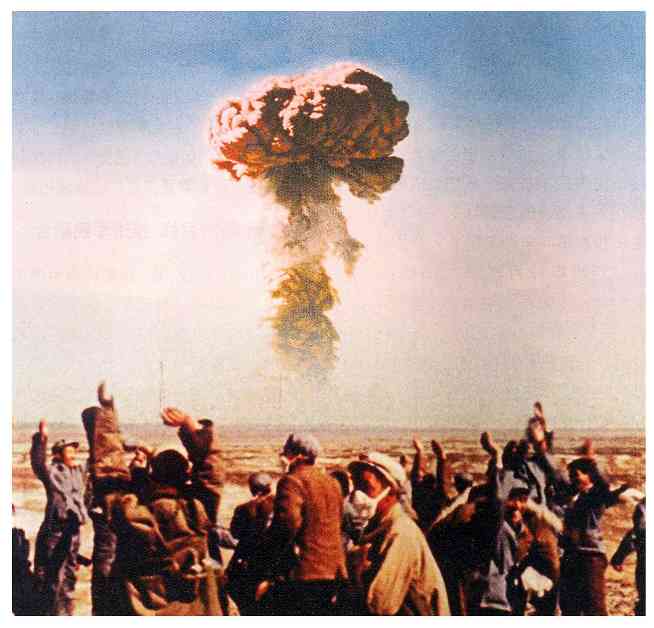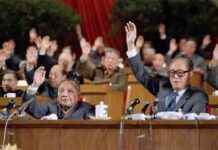Every day in 1990s China, children like me used to play tiao pijin during recess. It was a fun game of jump rope using elastic. We would chant a rhyme as we jumped: “The malan blooms. It’s twenty-one! Two-five-six, two-five-seven, two-eight-two-nine, thirty-one!” Little did I know back then that these innocent lyrics held a hidden message. Malan, the name of a plant, also referred to China’s nuclear testing base. The 21 in the rhyme was the military unit number of the base. Located in the arid landscape of Lop Nur in Xinjiang, the base was named after the malan plant. The Chinese government officially acknowledged the site in 1987. Since then, the blooming of the malan has been a symbol of China’s nuclear weapons program, mentioned in military songs and school performances.
As we celebrated the 60th anniversary of the first Chinese nuclear bomb test on October 16, I couldn’t help but think about the sacrifices made by the early Chinese nuclear scientists who worked tirelessly to build the country’s atomic shield. The stories of these scientists and the vastness and diversity of our motherland were ingrained in my childhood education. But as I grew older and delved deeper into the history of the bomb, I realized the darker sides of the narrative. The borderlands that served as testing sites were also homelands for indigenous peoples who were often erased from the national defense narrative. The triumph of the Chinese bomb seemed simplistic and devoid of moral complexity.
Studying physics in university and later pursuing a Ph.D. in the United States, I was surrounded by symbols of nuclear power and its impact. Artworks depicting the destructive force of the bomb and the ethical questions it raised were a constant reminder of the dual nature of scientific discovery. The legacy of the bomb, both in China and globally, has left a lasting impact on the environment and the people living in its shadow. From the radioactive fallout to the ecological devastation, the consequences of nuclear testing continue to affect generations.
The article highlights the historical context of Xinjiang and its transformation from a Turkic-Mongol homeland to a Chinese province. The forced displacements of herders and the imposition of Chinese settlements in the region underscore the colonial nature of nuclear testing sites. The economic exploitation of the land and its resources for the nuclear program reveal the imperialist motives behind the bomb. The article also touches upon the health impacts on both the indigenous populations and the Chinese soldiers who worked at the testing sites, shedding light on the human cost of nuclear development.
The narrative of progress and power associated with nuclear weapons is challenged by the voices of dissent and resistance, such as the Uyghur students protesting against nuclear testing in Lop Nur. The article emphasizes the need to acknowledge the marginalized voices and the environmental and health consequences of nuclear testing. By exploring the personal stories of individuals impacted by the bomb, the article humanizes the often abstract discussions around nuclear power and its implications for society.
As we reflect on the history of the bomb and its legacy, it is crucial to remember the importance of ethical considerations in scientific advancement. The article calls for a reevaluation of the narratives surrounding nuclear weapons and a recentering of the voices of those affected by their development. By highlighting the stories of individuals like Aziz Isa Elkun and his dedication to preserving the memory of his homeland, the article underscores the resilience and hope that can emerge from the most challenging circumstances. In the face of nuclear devastation, it is the human spirit and the pursuit of justice that offer a glimmer of light in the darkness.

















